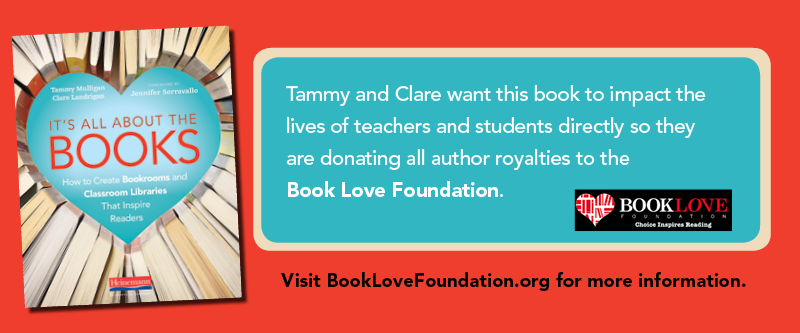
written by: Tammy Mulligan and Clare Landrigan
Research demonstrates again and again that access to an abundant supply of books in school and classroom libraries increases both motivation and reading achievement. Books are key instructional tools and we need to have a diverse range of quality texts at our fingertips at all times. To achieve this, teachers need to continually revise and add to their collections to reflect and include the instructional range and varied interests of learners each year, the new standards for curriculum, the new grade level they are assigned to teach, and the new books published. But the truth of the matter is, it is just not practical logistically or financially for every teacher to do this every year.
So how do we ensure every teacher has what she needs for every student every day?
How do we source classroom book collections on a budget?
How do we curate book collections so our students have access to diverse, engaging, quality texts?
Working together as a school community has been the answer for us. Classroom libraries need to be sourced from shared collections.
Many schools have two types of spaces that house shared books: the school library and the bookroom. Bookrooms take on many shapes, sizes, and configurations (it may be a closet, cart, or crate). Sometimes each grade level team has a bookroom, some bookrooms are in hallways, and some bookrooms are even located in the school library.
While school libraries and bookrooms both house books to be shared and even may be located in the same physical space, in many schools they serve a different role for students and teachers. In It’s All About the Books, we share how we have most often seen these two spaces utilized in our partner schools.
What are the differences in the roles of the school library and the bookroom?
School Libraries
In the schools we have worked with, the primary role of a school library is to give students the freedom to find, choose, and read whatever they want. The key difference here is that we do not believe that school libraries are primarily meant to be organized to support curricular or instructional goals or to supply classroom libraries with the volume of books needed. While the books in the library support and supplement the classroom curriculum, we would never want instructional goals to dictate how a library is organized or the access a reader has to books. Librarians are masters of introducing students to the perfect books for their interests and the resources they need to learn at the individual level of inquiry. Librarians can support curriculum by suggesting texts, by showcasing texts for students to read within a content area, and by co-teaching units of study. As stated in the ALA position statement on the instructional role of the school librarian, “School librarian instruction results in students who read and utilize print and digital resources for curricular and personalized learning needs. School librarians teach students how to be inquiring learners who evaluate and use both print and digital information efficiently, effectively, and ethically, with the goal of developing lifelong learning and literacy skills.” (AASL 2007).
Bookrooms
We are often asked how our vision of a bookroom differs from that of a school or a classroom library. We believe a bookroom differs from a school library in that its primary purpose is to supply books to classroom libraries. The bookroom is a shared instructional resource that provides teachers with a greater range of books for their readers and for their instructional goals. It is the perfect complement to a vibrant school library and a well-designed classroom library.
Ideally, bookrooms supply the depth, breadth, and the volume of books to supplement what each teacher needs and what every student wants. They provide enough books at each level for students to read independently, multiple copies of texts to support small-group and partner instruction, mentor texts for whole-class lessons, whole-class texts for interactive read-alouds, and extra copies of those "hot off the press" titles. All of this is organized in grab-and-go baskets for a teacher to simply (and quickly) take and incorporate into her classroom library. Classroom libraries need to stay fresh and attract readers with a flow of new books, and bookrooms allow us to make this happen.
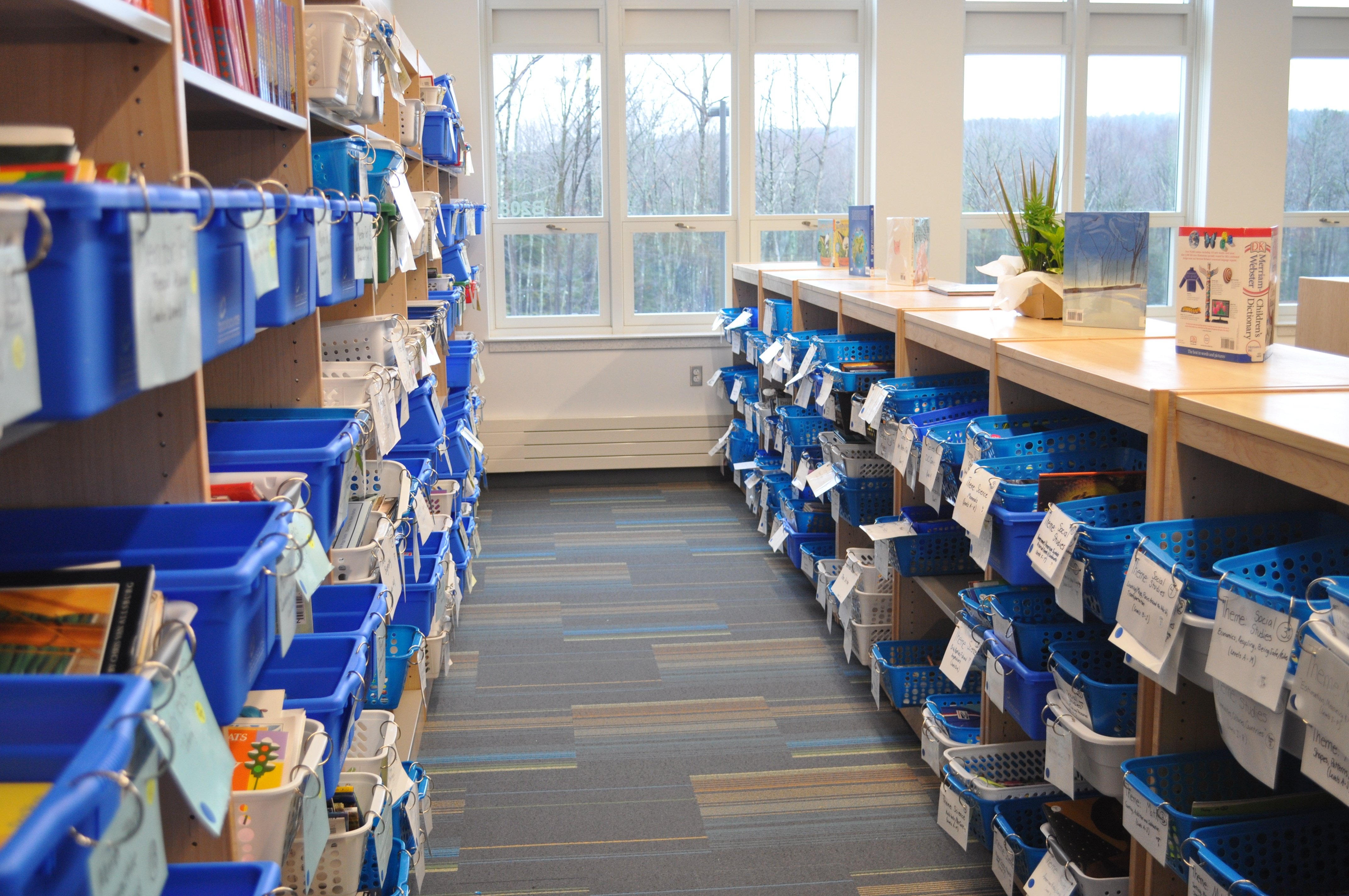
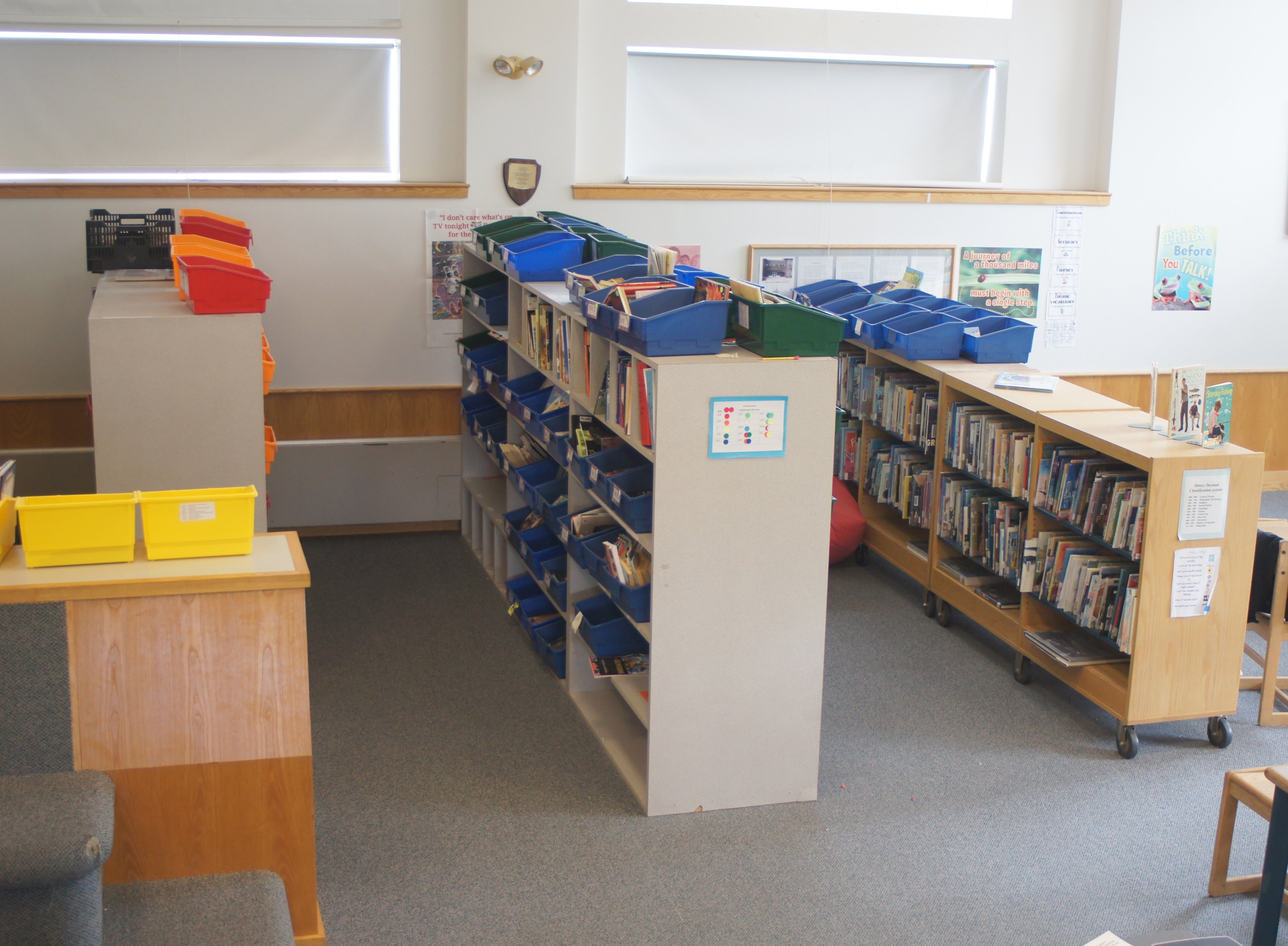


We have seen some schools with very limited books try to source classroom libraries with books from the school library, but it was not successful. Fountas and Pinnell’s research (1996) suggests that teachers need between three hundred and six hundred titles in their classroom library. When the sole source of books for the classroom collection was the school library, the school library collection became depleted, making those library books less available to individual students. In these instances, the goal of providing greater access actually reduced choice.
But how do we know which books belong in the bookroom and classroom libraries?
That is where we, and most teachers we know, rely on the ultimate resource in the school library– the school librarian. The school librarian is the person we look to for book suggestions, to connect books to readers and to keep us apprised of new publications. They help us keep our classroom libraries current and fresh by advising us on what they cannot keep stocked in the school library. The role of the bookroom is not to reduce the importance of the school library – it is to ultimately add to the volume of books in a school. When most successful, school librarians play a key role in curating the bookroom collection as well as the school library collection.
Donalyn Miller and Jennifer Lagarde said it best in a recent blogpost on Nerdy Book Club:
Working together, teachers and librarians can offer students the best book access possible and provide them with reading role models and mentors throughout the school. Surrounded by books and encouragement, more children will become readers.
This has certainly been our experience in schools. Access is more than volume. Access is about connecting students with books. Every child deserves the opportunity to become a lifelong reader. The right book at the right time might be just what it takes to provide that opportunity.
Learn even more about bookrooms in It’s All About The Books.
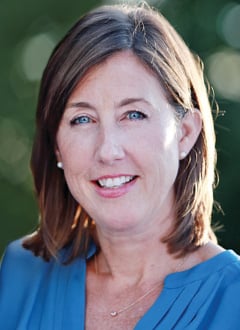 Clare Landrigan is a staff developer who is still a teacher at heart. She began her work as an educator over twenty years ago, teaching in an integrated first- and second-grade classroom at the Eliot Pearson Children's School in Medford, MA. She now leads a private staff development business and spends her days partnering with school systems to help them implement best practices in the field of literacy. Clare is the coauthor of the book, It's All About the Books: How to Create Bookrooms and Classroom Libraries That Inspire Readers. You can find Clare online at Twitter, and at her website, where she blogs about books and the art of teaching.
Clare Landrigan is a staff developer who is still a teacher at heart. She began her work as an educator over twenty years ago, teaching in an integrated first- and second-grade classroom at the Eliot Pearson Children's School in Medford, MA. She now leads a private staff development business and spends her days partnering with school systems to help them implement best practices in the field of literacy. Clare is the coauthor of the book, It's All About the Books: How to Create Bookrooms and Classroom Libraries That Inspire Readers. You can find Clare online at Twitter, and at her website, where she blogs about books and the art of teaching.
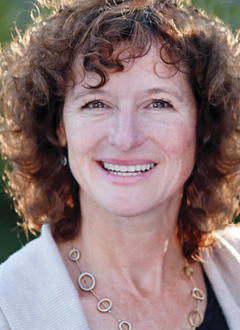 Tammy Mulligan began her work with Clare Landrigan over twenty years ago co-teaching in an integrated first and second-grade classroom at the Eliot Pearson Children’s School in Medford, MA. They believe that effective professional development includes side by side teaching; analysis of student work; mutual trust; respect; and a good dose of laughter. You can find Tammy online on twitter.
Tammy Mulligan began her work with Clare Landrigan over twenty years ago co-teaching in an integrated first and second-grade classroom at the Eliot Pearson Children’s School in Medford, MA. They believe that effective professional development includes side by side teaching; analysis of student work; mutual trust; respect; and a good dose of laughter. You can find Tammy online on twitter.
Related Reading

The following is an adapted excerpt from Tammy Mulligan and Claire Landrigan's It's All About the Books.
